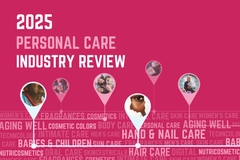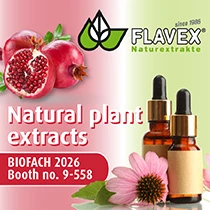ASA joins CTPA, rules against misleading allergy-safe hair dye claims

The UK Advertising Standards Authority (ASA) has upheld a complaint from the UK Cosmetic, Toiletry and Perfumery Association (CTPA) regarding misleading para-phenylenediamine- (PPD) free claims made by Instituto Naturvita for its Natur Vital Colorsafe hair dye range. PPD is a chemical used in permanent hair dye to make colors look more natural by bonding color molecules to the hair for longer.
The CTPA initiated the formal complaint after it claimed unsuccessful attempts to resolve the concerns directly with Instituto Naturvita. According to the ASA ruling, Instituto Naturvita “stated that they were committed to resolving the issue, but did not believe that the information on their website was misleading.”
Despite being labeled as free from PPD, the products include a related allergen, toluene-2,5-diamine sulfate (PTD), which the Instituto Naturvita website markets as safe for allergy sufferers. According to the hair care brand’s website’s allergy section, its research “has shown that 50% of people with a PPD allergy react to Colorsafe, the other 50% show no reaction.
The association highlights that labeling the product as PPD-free could put consumers at significant risk as both PPD and PTD belong to the phenylenediamine family. Consumers allergic to PPD may suffer similar reactions if exposed to PTD — which can be severe and, in some cases, life-threatening, with anaphylaxis being a rare but possible outcome, says the CTPA.
The ASA ordered Instituto Naturvita to cease using PPD-free claims in future advertisements and ensure that all marketing materials do not imply the safety of consumers with PPD allergies without clear evidence.
CTPA director-general Dr. Emma Meredith emphasizes the decision’s importance, saying, “The CTPA and I very much welcome this ruling from the ASA, as it underlines the importance of protecting allergic consumers from experiencing reactions which can be very serious.”
 Consumers allergic to PPD may suffer similar reactions if exposed to PTD — which can be severe and, in some cases, life-threatening. “Ensuring that cosmetic product claims are accurate and not misleading is crucial in preventing serious allergic reactions and safeguarding public health.”
Consumers allergic to PPD may suffer similar reactions if exposed to PTD — which can be severe and, in some cases, life-threatening. “Ensuring that cosmetic product claims are accurate and not misleading is crucial in preventing serious allergic reactions and safeguarding public health.”
Since the ruling, Instituto Naturvita has not discontinued using these claims on its website or altered its FAQ section to elaborate more on the formulation ingredients.
ASA’s assessment
The ASA says it found multiple instances of misleading claims on Instituto Naturvita’s website. According to the authority, phrases such as “PPD-free permanent hair color” and “lessening the risks of allergic reactions” create the impression that the product is safe for PPD-allergic consumers, while the use of the product name “Colorsafe” further reinforces the misleading narrative.
Some sections of the website recommend consumers do a 48-hour patch test, and others state in fine print that it is required.
The ASA deemed this information insufficient and not prominently displayed. Its ruling concluded that the overall messaging irresponsibly minimized the risks, violating the UK Code of Non-broadcast Advertising and Direct and Promotional Marketing (CAP Code).
Section 3.3 of the UK’s CAP code outlines: “Marketing communications must not mislead the consumer by omitting material information. They must not mislead by hiding material information or presenting it in an unclear, unintelligible, ambiguous, or untimely manner.”
Despite the ASA’s ruling, the Instituto Naturvita website continues to promote its hair dye range with PPD-free marketing..png) Some sections of the website recommend consumers do a 48-hour patch test, and others state in fine print that it is required.
Some sections of the website recommend consumers do a 48-hour patch test, and others state in fine print that it is required.
Descriptions on Natur Vital’s website still assert that the absence of PPD in the formulation reduces allergic reactions. Similarly, the ASA says the FAQ section significantly downplays the risks of PTD — raising questions about the company’s commitment to public safety and transparency.
Prioritizing public health
The CTPA’s Position Paper on “free-from” claims outlines why transparency is essential in cosmetic marketing. According to the paper, such claims should only be used to genuinely inform consumer choices and not imply superior safety.
The CTPA calls for a shift toward positive marketing that highlights product benefits rather than focusing on ingredient exclusions because misleading claims can damage the industry’s reputation and erode consumer trust.
Hair treatments as a product category have been the focal point for ongoing scrutiny and public awareness.
US consumer advocacy groups have been working toward the prohibition of formaldehyde from hair product formulations. The Environmental Working Group previously condemned the US FDA for deprioritizing banning the harmful chemical after years of bureaucratic dormancy.
The regulatory inaction has inspired some American states to take matters into their own hands, with Washington proposing a ban on 28 formaldehyde-releasing chemicals in products sold, manufactured, or distributed state-wide. Washington’s initiative could set a precedent for other states to follow, leading to potential nationwide policy changes despite the federal negligence.












